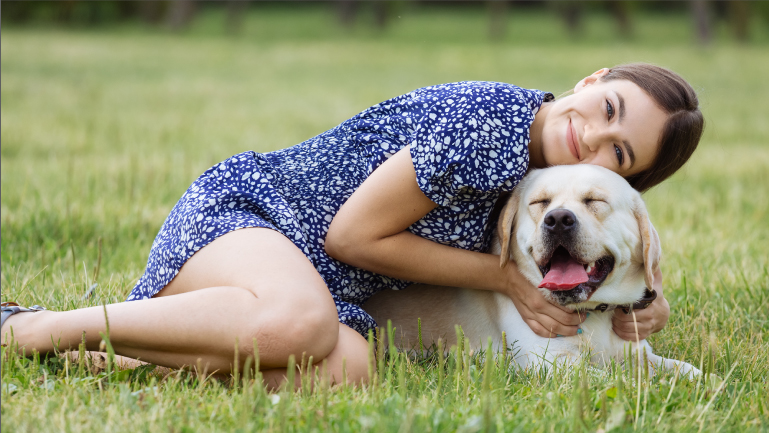Tips & Tricks for Adopting a Dog
Dogs make excellent additions to any household. They are a source of seemingly endless positivity and happiness. They encourage their owners to maintain an active and social lifestyle, and above all, they are a great source of companionship. If you are considering bringing a dog into your home, here are some tips to help make it a seamless, easy transition.
Establish A Plan
Before bringing home your new pet, there are some preparations to be made 1. First things first, you need to develop a plan with your family and delegate responsibilities. Are there any rooms that the dog cannot go into? Who is responsible for walking the dog and when? Who feeds the dog and how much? If you live in a bilingual household, what will be the primary language spoken to the dog? 2 Dogs thrive on routine, so having designated times and people available to carry out these routines will help to immediately ease your pet’s transition into the family.
This is also the time to decide if you will need any homecare services for your pets 1. If your house is empty throughout most of the day, then it is worth researching dog walkers or doggy daycares to insure that your pet is receiving proper attention while you and your family are at work or school.
Most cities require dogs to be licensed, so it is best to take care of this as soon as possible 3. Most licenses can be purchased at your veterinary office. Even if your city does not require it, it is a good idea to have some sort of identification tag on their collar. You may also consider getting your dog microchipped, as this is a more permanent form of identification that can play a vital part in reuniting you with your pet if you were to be separated. This is a fast and inexpensive procedure that your veterinarian can perform.
Pick Up Supplies
Once there is a plan in place, it is time to start prepping! Go out and buy the right supplies 1. This is an easier task if you have an idea of what kind of dog you want (or at least a vague notion of size, like small, medium, or large), but there are several general supplies that all dogs will benefit from having. Crates, collars and leashes, chew toys, and treats are must haves 3. When purchasing food for your dog, try to figure out what food they were eating in their previous home/shelter and purchase that initially. If you want to switch them to a different brand or type of food, then do so gradually over a period of several days to weeks. This can be done by mixing in two parts old food to one-part new food over a few days, and then slowly increasing the proportion of new food. A sudden change in diet (on top of the stress from entering a new home) could leave your dog with an upset stomach 2.
Prep Your Household
Be sure to dog-proof your home, especially if you are bringing home a puppy 2. Any toxic plants, foods, or chemicals should be removed well before your new pet comes home. Electrical cables should be covered or hidden. If there are any areas of the house that you do not want your pet to access (bedrooms, for example), consider installing baby gates to limit their access. If you plan to crate-train your dog, go ahead and set up the crate in a central location of the house. We recommend the kitchen; the floor is easy to clean and the central location will prevent your pet from feeling lonely 1.
Make Introductions
If possible, have your dog meet any children or other pets BEFORE they come home 3. Dogs work best if they feel they are part of a pack and these early introductions can help them form that mentality. Especially with small children, be sure to teach them about boundaries prior to meeting the dog. A child’s excitable energy could quickly overwhelm a new dog and make for a negative first impression.
or the first few days after your dog comes home, try to maintain a calm, quiet, and generally peaceful environment 2. Though you may want to parade your new pet in front of all of your friends and family to celebrate the new addition, this can cause undue stress for your new dog. Loud noises or lively environments will make your dog feel overwhelmed as they try to adjust to their new home.
Set Expectations
This is also the time to start establishing a routine. Begin feeding your dog at the same time every day and taking them out on frequent walks. While different times work for different families, be sure to be consistent. Dogs have a very strong internal clock and will be comforted by knowing when it is time to go out and/or eat. Having a schedule will also reduce the risk of “accidents” in the house.
Be firm with any rules you have 3. It is tempting to let your dog “off the hook” because they’re new. Some bad behavior is expected, as transitioning to a new home is a very stressful time for your pet, but corrections should be made immediately and good behavior encouraged. It is much easier to stop a bad habit from forming than it is to break one. Your dog will feel more secure knowing what behavior is expected of them 3.
Above all, treat your new pet with patience 1. In most cases, it is difficult to ascertain what sort of background your dog has come from. They could be apprehensive around children or other dogs. Hearing the vacuum cleaner might send them into a frenzy. They may be hesitant to walk on a leash or be very protective of their food. However your dog is behaving when they first enter your home, be understanding. Their true personality will begin to emerge after the first few weeks 2. If a behavior is especially problematic, you can talk to your veterinarian or seek the help of a professional trainer. In most cases, however, proper care, routine, and lots of love can turn even the most skittish animal into a happy and healthy member of your family.
Take-Away Points
- Prepare ahead of time! Come up with a care plan, research doggy services, and prep your home with the proper supplies.
- Keep your environment calm and peaceful. Give your dog plenty of time to adjust.
- Obtain a license and get your dog microchipped by your veterinarian as soon as possible.
- Establish a routine—and stick to it!
- Treat your dog with lots of patience and love.
Sites Referenced
- “Bringing Home Your New Dog.” Dogtime, 15 Apr. 2016, dogtime.com/dog-health/general/262-adults-bringing-home.
- “Tips for the First 30 Days of Dog Adoption.” Petfinder, www.petfinder.com/dogs/bringing-a-dog-home/tips-for-first-30-days-dog/.
- “I Adopted a Dog, Now What?” Wags and Walks, www.wagsandwalks.org/what-to-do-after-adopting-a-dog/.







